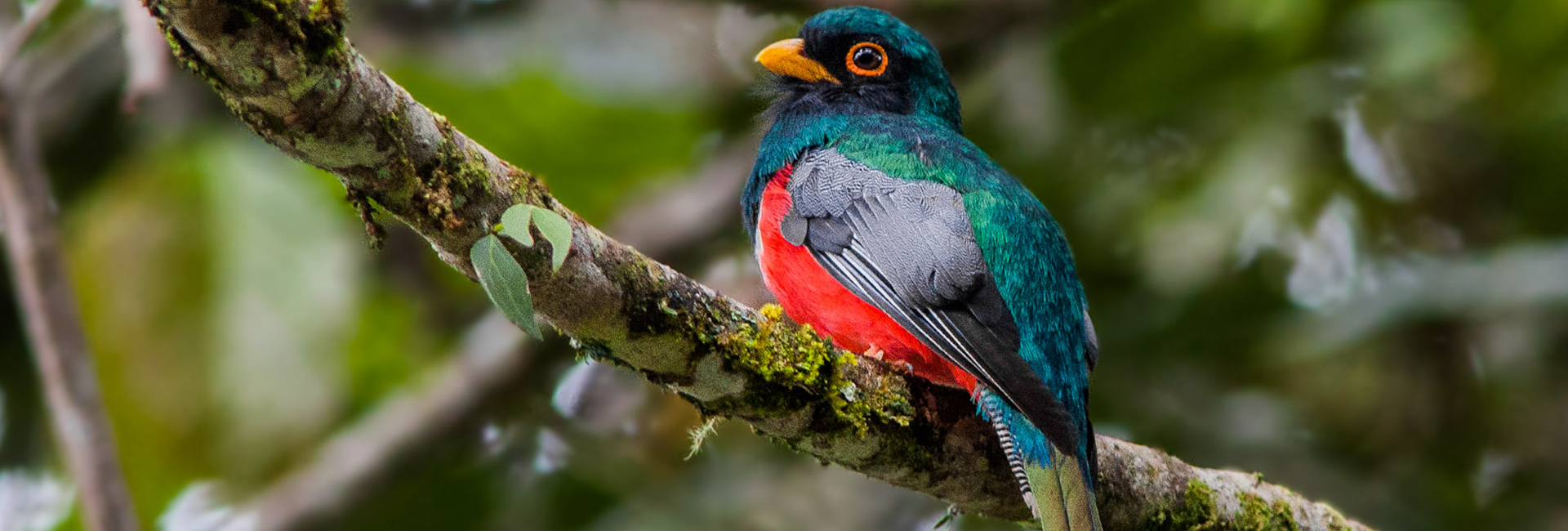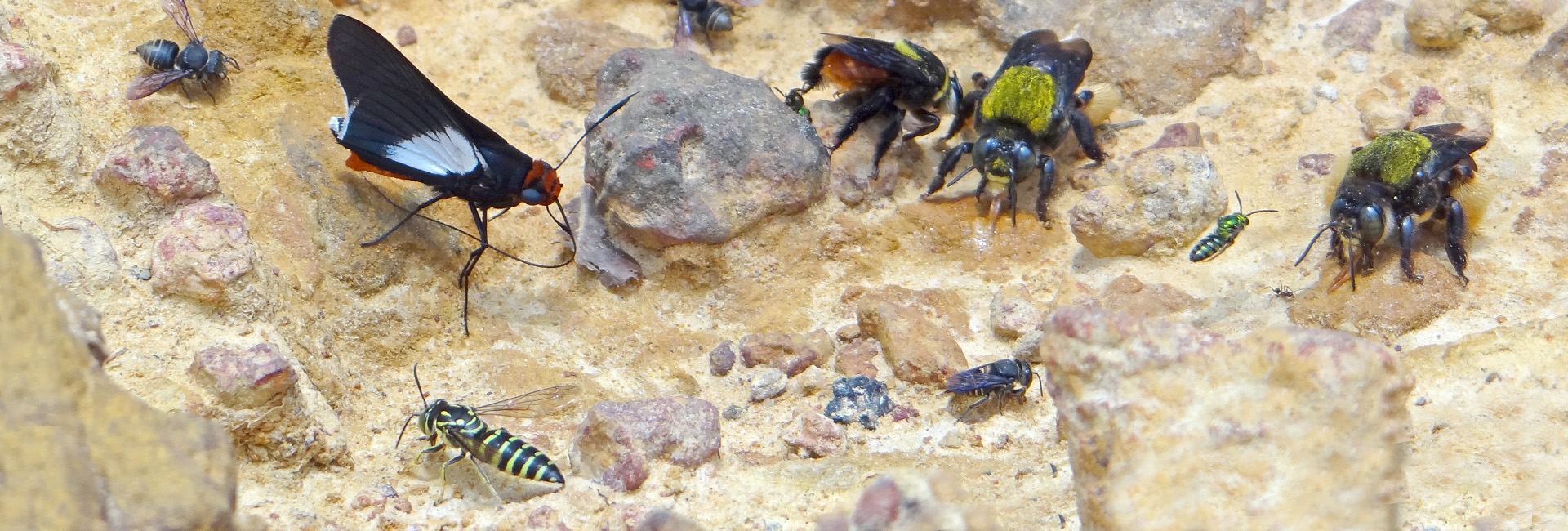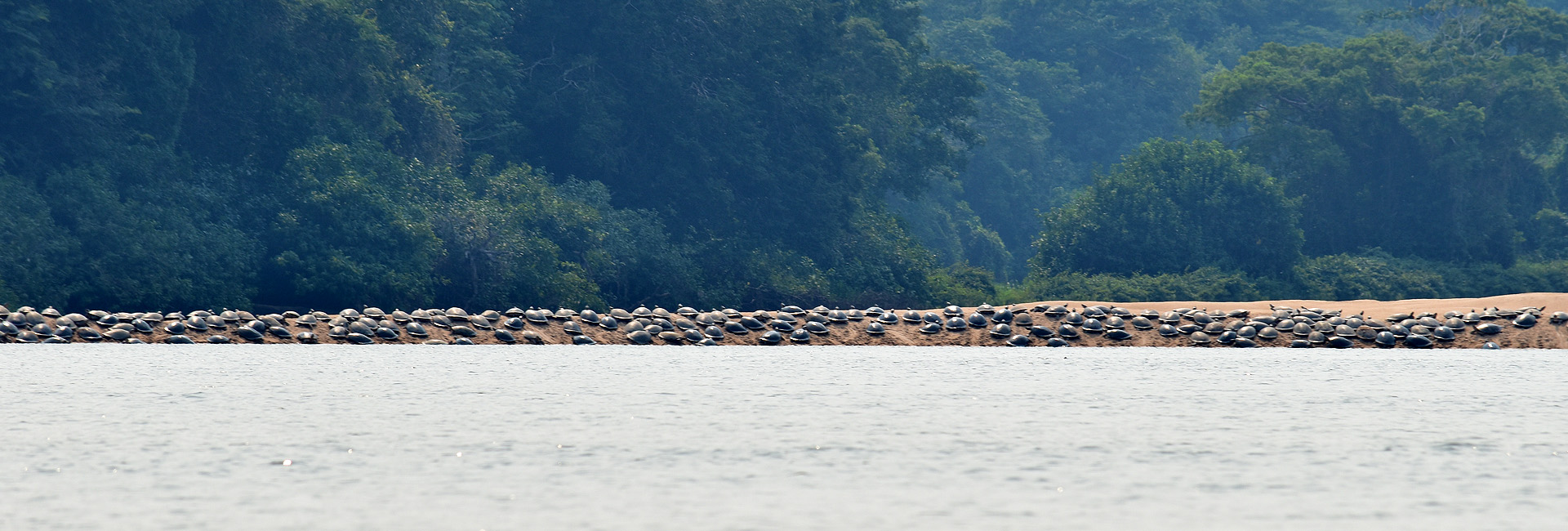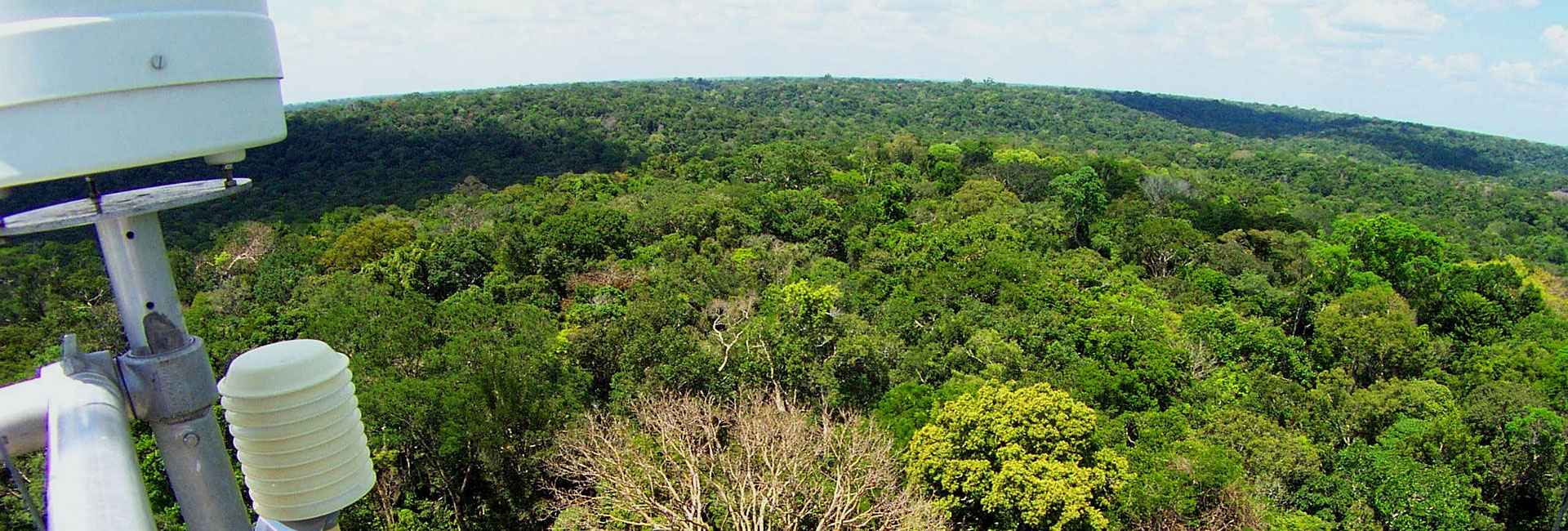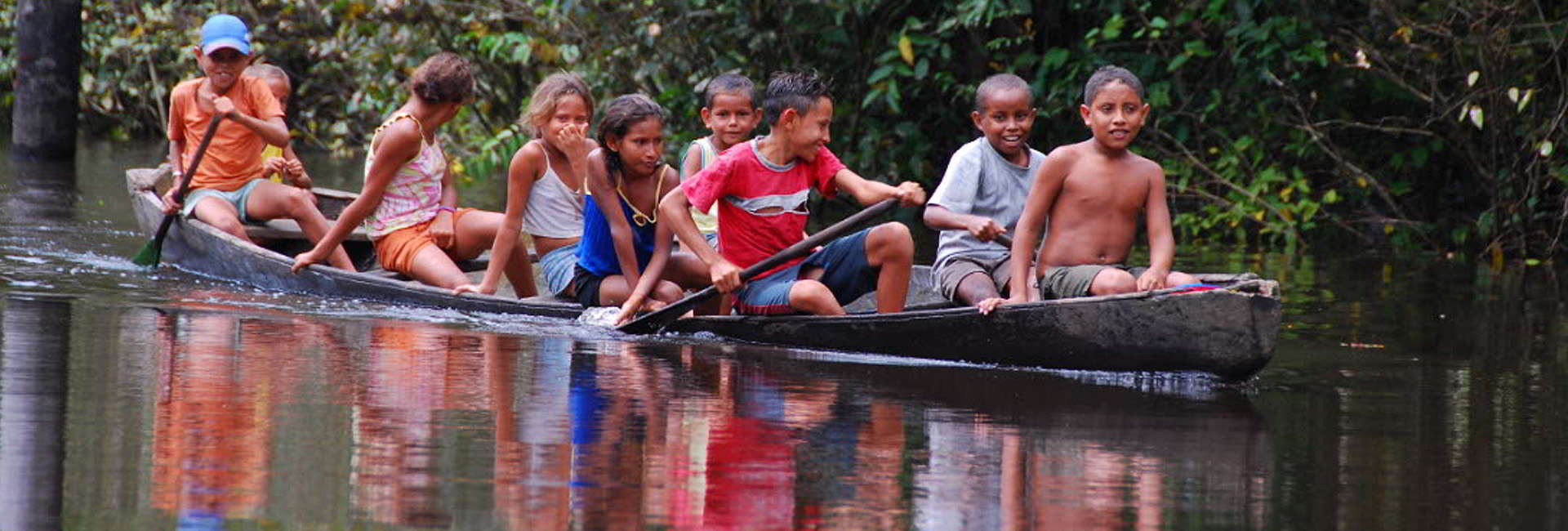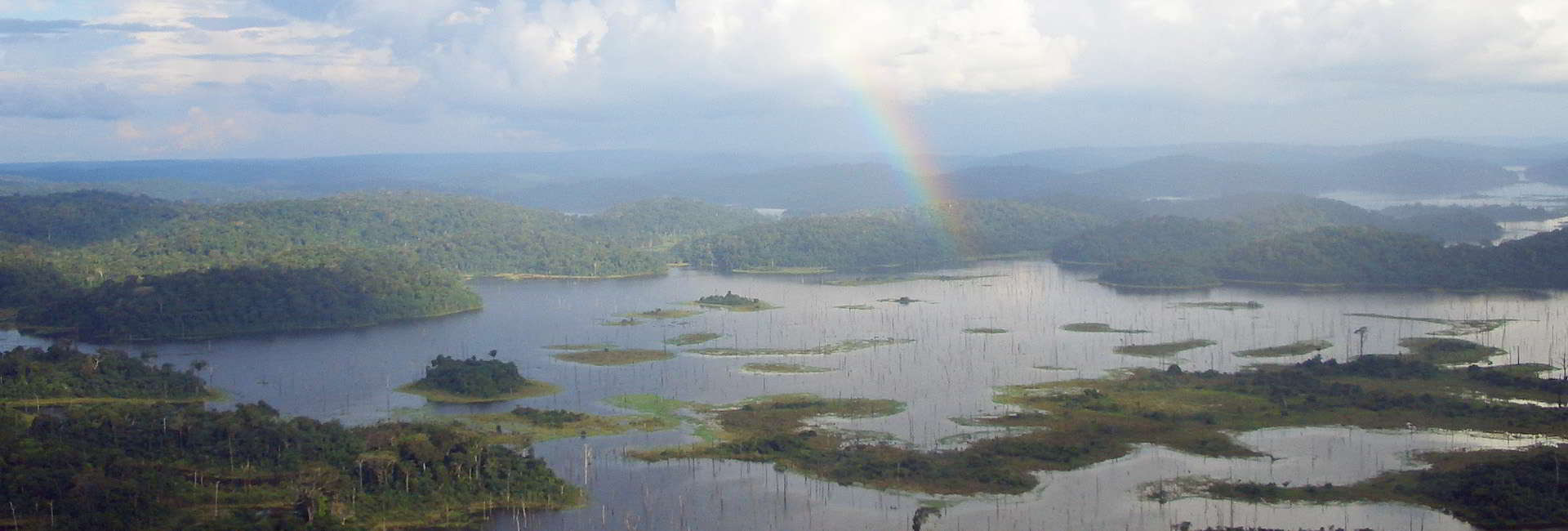Insularization effects on bird acoustic signals
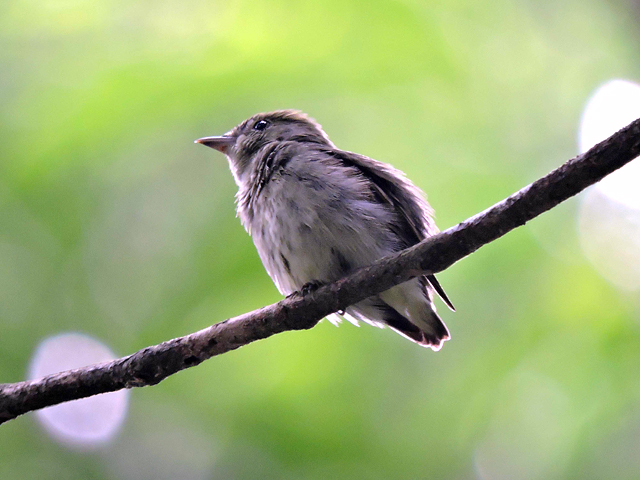 For his master's project in Ecology, Thiago Bicudo analyzed the effect of lanscape changes on the scructural and temporal parameters of the vocalization of two suboscine birds that are common in primary forests, Lipaugus vociferans and Tyranneutes virescens. The former species is one of the trademark voices in Amazonian rainforests. The study has been recently published in Behavioral Ecology.
For his master's project in Ecology, Thiago Bicudo analyzed the effect of lanscape changes on the scructural and temporal parameters of the vocalization of two suboscine birds that are common in primary forests, Lipaugus vociferans and Tyranneutes virescens. The former species is one of the trademark voices in Amazonian rainforests. The study has been recently published in Behavioral Ecology.
Sampling was carried out on 13 forest-fragment islands in the reservoir of the Balbina hydroelectric dam, and two mainland areas of continuous forest. The islands had areas of 14 to 700 ha, and were at least 2 km apart. The two species were selected for their resilience and ubiquitous presence in the forest remnants.
Acoustic signal variability was analyzed in relation to acoustic community proxies (island area and isolation) and forest structure variables related to transmission and degradation of acoustic signals. The vocalizations of five individuals of each species were recorded at each study site.
Bandwidth variation of the call of L. vociferans was related to island area and isolation, while no significant variation was observed for T. virescens. Contrary to predictions, lowest and peak frequency of the call in both species was higher on islands with greater tree basal area. Temporal characteristics of both songs were not related to island characteristics.
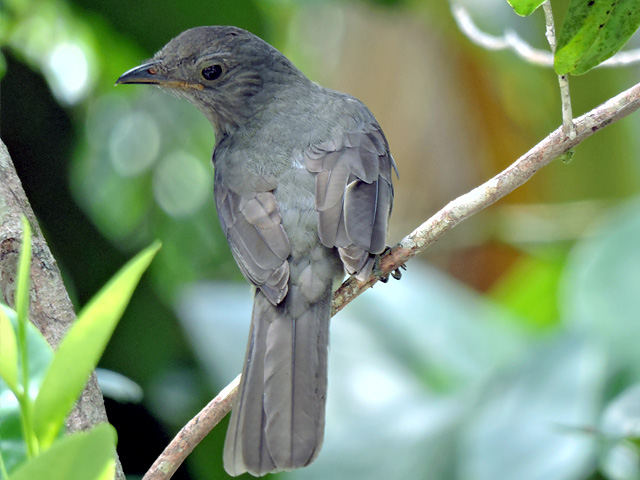 The results indicate that the vocalization of L. vociferans is undergoing some measure of character release on the forest-fragment islands in a relatively short timescale of 28 years since reservoir formation. The character release is facilitated by the lower availability of habitat types and fewer component species in the acoustic community of the fragments, leading to a less saturated acoustic space. The song of T. virescens probably was less variable because it is characterized by narrower bandwidth frequencies, and is constrained by the more restricted habitat use of this species in the mid-canopy. The study also showed that different elements of the songs varied in opposite direction in relation to environmental gradients, suggesting that environmental variation can exert differential pressure on particular traits in bird songs.
The results indicate that the vocalization of L. vociferans is undergoing some measure of character release on the forest-fragment islands in a relatively short timescale of 28 years since reservoir formation. The character release is facilitated by the lower availability of habitat types and fewer component species in the acoustic community of the fragments, leading to a less saturated acoustic space. The song of T. virescens probably was less variable because it is characterized by narrower bandwidth frequencies, and is constrained by the more restricted habitat use of this species in the mid-canopy. The study also showed that different elements of the songs varied in opposite direction in relation to environmental gradients, suggesting that environmental variation can exert differential pressure on particular traits in bird songs.
The master's project was supervised by Marina Anciães and Pedro Ivo Simões.
The main image shows an individual of Lipaugus vociferans at Ramal do Pau-Rosa (km 20 of the BR-174 highway, Amazonas). The second image shows an individual of Tyranneutes virescens at Cachoeira-da-Onça (Presidente Figueiredo, Amazonas). Both birds were photographed by Renato Cintra (INPA).



